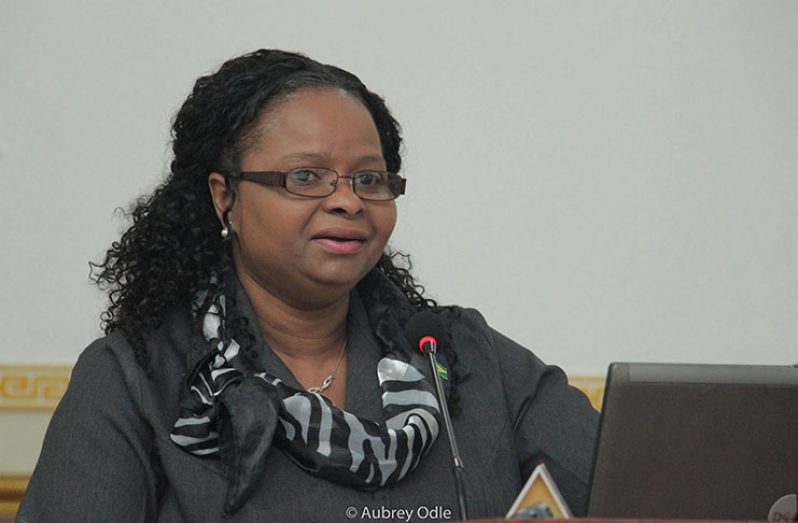— six-year-old did not die as a result of tablet, autopsy finds
THE post-mortem performed on six-year-old Princess Kissoon did not link the child’s death to the filaria pill she took, the Public Health Ministry has said, while stating clearly that the pills being administered are safe.
The Health Ministry issued the statement late Tuesday night after news broke on Monday that the six-year-old died days after ingesting half of a filaria pill.
Kissoon’s father Ray Kissoon has alleged that his daughter was in good health when he gave her half of an Albendazole, but later fell sick. She was sick for a period of two days before being rushed to Georgetown Public Hospital (GPHC).
In that statement, the Health Ministry expressed condolences to the family of Kissoon, who died on her way to the GPHC on October 27, 2017, but made it clear that her death was not as a result of the pill.
“The post-mortem examination performed by pathologist, Dr. Nancy Olario on October 29 does not point to any linkage between the ingestion of the tablet and the Kissoon child’s death. The ministry is confident that the drugs being administered on the filaria campaign are safe,” the ministry stated.
The Global Programme to Eliminate Lymphatic Filariasis began in 2001 in Guyana.
It was pointed out that since 2008, six regions have benefited from the Mass Distribution of the tablets Diethylcarbamazine (DEC) 100mg and Albendazole 400mg at predefined doses.
“In 2016, 277,612 persons from Regions Three, Four, Five and 10 received the drugs via Directly Observed Therapy (DOT). Prior to this initiative, thousands of Guyanese had received Diethylcarbamazine in DEC salt. The medicines being distributed are donations from the World Health Organisation through their regional office, the Pan American Health Organisation,” the Health Ministry further explained.

It was noted that the donation process begins with the exchange of documents which include a certificate of good manufacturing practice, a certificate of analysis of the tablet which assures product quality assurance, an information leaflet on the tablet which details its indications, considerations and precautions, dosage and side effects.
The documents, the ministry stated, are first perused by the permanent secretary and chief medical officer of the Ministry of Public Health before the drugs are approved for shipment.
The Ministry of Public Health further pointed out that Albendazole may cause gastrointestinal disturbances; abdominal pain, diarrhoea, headaches, dizziness while DEC is known for causing nausea, vomiting, headaches, dizziness, drowsiness, weakness, anorexia, fever and rash/allergic reaction.
Albendazole, the ministry stated, should not be given to children under one year and women in their first trimester of pregnancy, while DEC should not be given to children under two years, nor pregnant women.
Together, the two tablets kill filarial worms and microfilariae.
“It should be noted that the adverse effects listed are pretty uncommon and occur mostly in patients who have a significant worm burden. Adverse effects subside within 24 hours. Any person who experiences these adverse effects beyond this time should seek medical attention,” the Health Ministry stated.
It added that: “In the nine years of tablet distribution, the country boasts that there have been no serious adverse events that have led to hospitalisation, disability nor death.”
The Health Ministry said it continues to provide the Directly Observed Treatment in an on-going effort to protect the public from the chronic debilitation caused by filariasis. Eligible citizens are urged to participate.



.jpg)









